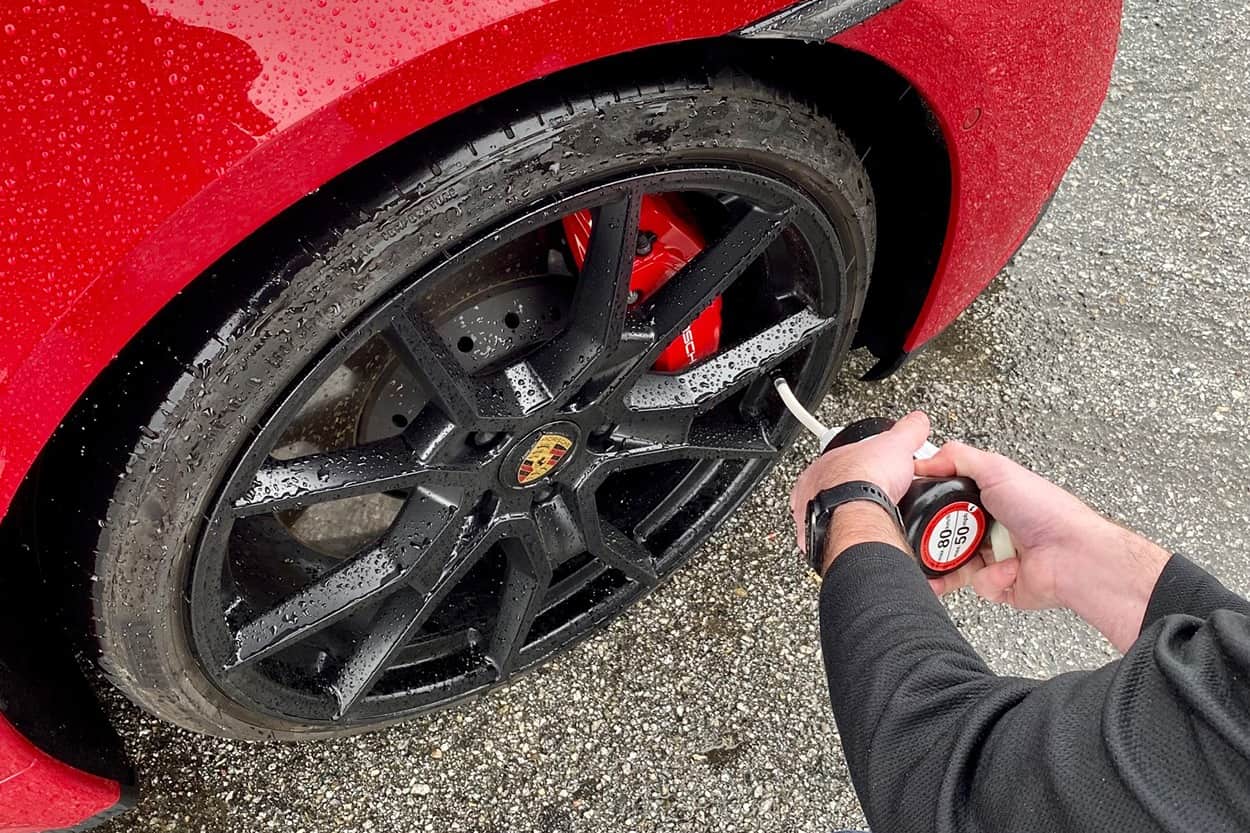Mastering the skill of tire changing is crucial for any vehicle owner, particularly for those owning exotic cars, as these vehicles are slightly more daunting due to their distinct features and needs.
However, fear not. Surprisingly, this task can be accomplished quickly with the correct approach. This guide is designed to equip you with the necessary know-how for replacing a tire on your exotic car, ensuring you’re ready for unforeseen situations.
Why is Changing Tires on Exotic Cars Unique?

Their unique properties and specific suspension setups mean their tire-changing process differs from regular cars like sedans or SUVs. Understanding these differences is vital to a hassle-free tire replacement.
Tools You Need and Safety Measures to Change an Exotic Car Tire
Exotic cars have maintenance needs, including oil changes and spark plug replacements. However, safety should always be paramount, alongside choosing the appropriate tools.
Essential Tools
Low Profile Hydraulic Jack: Given the lower stance of exotic cars, a low-profile jack is necessary. Ensure it can bear the car’s weight and offers sufficient lift.
Torque Wrench: Essential for correctly tightening the wheel nuts to the manufacturer’s recommended torque, avoiding over- or under-tightening, especially important for high-performance cars.
Wheel Locks: To prevent movement during the tire change, place wheel locks on the side opposite to the tire being changed.
Work Gloves: For hand protection and improved grip.
Safety Precautions
Safe Parking: Position the car on a level, stable surface. Avoid tire changes on inclined or shaky grounds.
Correct Jack Placement: Use the jack at the car manufacturer’s designated jacking points to support the car’s weight during lifting.
Maintain Distance: Keep a safe distance from the raised car and avoid standing beneath it.
Brake and Gear Setting: Engage the hand brake before starting. Use ‘Park’; for manual cars, choose first or reverse gear.
Additional Advice
Ensure Good Lighting: This is particularly vital for nighttime tire changes.
Emergency Kit: Keep a kit in your car with reflectors or signal triangles to alert other drivers.
Refer to the Manufacturer’s Manual: Always check your car’s manual for specific tire-changing instructions, as exotic cars might have unique procedures.
By being adequately equipped and adhering to these safety tips, you can change your exotic car’s tire efficiently and safely, minimizing risks to yourself and your vehicle.
How to Change an Exotic Car Tire
Attention to specific details is crucial for a safe and effective tire change on an exotic car. Here’s a comprehensive guide:
Preparation Steps
Begin by ensuring the vehicle is on flat, stable ground. Then, engage the parking brake and set wheel locks on the opposite tires.
- Locating the Proper Lifting Point: Consult the car manual for the specific points to jack up your vehicle. These are reinforced to bear the car’s weight during lifting.
- Raising the Vehicle: Lift the car until the tire is entirely off the ground.
- Removing the Tire: Loosen and take off the nuts or bolts with a torque wrench, then carefully remove the rim, keeping it balanced to prevent damage to the rotor or suspension.
- Installing the Spare Tire: Line up the spare with the bolts and slide it on. Hand-tighten the nuts or bolts.
- Lowering the Car and Final Tightening: Gently lower the car using the jack. Once on the ground, use the torque wrench to tighten the nuts or bolts in a star pattern.
Final Check-Up
Ensure every nut and bolt is securely tightened. Double-check the spare tire to make sure it’s adequately inflated and keep the damaged tire and all the tools you used handy.
Post-Tire Change Actions
It’s wise to have your car looked over by a specialist after changing the tire, mainly if the damage resulted from a bump or road mishap.
A professional can inspect for additional damage and confirm that the spare tire is correctly balanced.
Common Blunders to Steer Clear Of
Tire changing might look straightforward, but frequent errors can cause further damage or risks. These include using incorrect tools, over-tightening lug nuts, or overlooking your vehicle’s needs. Refer to your car’s manual and choose tools tailored to your model.
When to Call for Help

Absence of Specialized Tools
If you lack the specific tools required for your exotic car, like a low-profile jack or a calibrated torque wrench, it’s safer to let a professional handle it.
Uncertainty in Procedure
If you need clarification on any step, especially with cars having intricate suspension or wheel systems, it’s wise to get professional assistance to avoid expensive mistakes.
Unique Technical Features
Some exotic cars have special technical aspects, like TPMS or advanced suspension setups, needing expert tools and knowledge for correct post-change treatment.
Visible Damage to Suspension or Car’s Underbelly
Spotting damage to the suspension, undercarriage, or other vital parts post-incident necessitates a specialist’s check and repair.
After Major Impact
Following a significant impact, like hitting a curb or pothole, check your car professionally to exclude any hidden damage affecting safety and performance.
Post-Change Tire Check and Balancing
Successfully changing the tire doesn’t end the process. Visit a specialist for a thorough check-up to ensure the spare is installed correctly, keeping your car in prime condition.
By opting for professional help in these situations, you’re safeguarding your exotic car’s integrity and performance, thus protecting your investment and safety.
Conclusion
Tire replacement on an exotic car demands more meticulous attention than standard vehicles. However, you can confidently undertake this task with the correct tools and knowledge. The mantra here is to be well-prepared, stay safe, and seek expert advice when unsure.
FAQ
Can I just use any old jack for my exotic car?
Imagine this: Your exotic car is the high-end athlete in the car world. Using a standard jack? That’s like trying to fit a square peg in a round hole. These cars often hug the ground closer, so a low-profile hydraulic jack is your best bet. Think of it as getting the right tool for an exceptional job – it makes all the difference.
How often do I need to swap out the tires on my exotic car?
Here’s the deal – there’s no one-size-fits-all answer. It’s like asking how often you should get a haircut. It really depends on how much you drive and the roads you frequent. If you love long drives or your routes are a bit rough, your tires might whisper for a change sooner. Just keep an eye on them; they’ll tell you when it’s time.
What are the tell-tale signs of tire wear on my high-performance car?
Paying attention to tire wear is like being a detective – you’ve got to look for the clues. Uneven wear? That’s a red flag. Seeing the tread wear indicators? That’s your car’s way of saying, “I need new shoes, pronto!” Also, watch out for any cuts or bulges – they’re like warning lights flashing. It’s all about keeping your car happy and safe.





Comments (0):